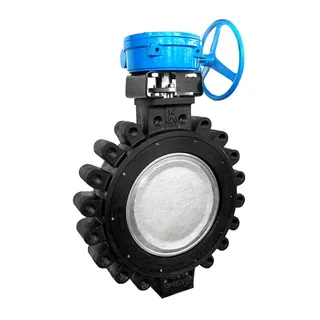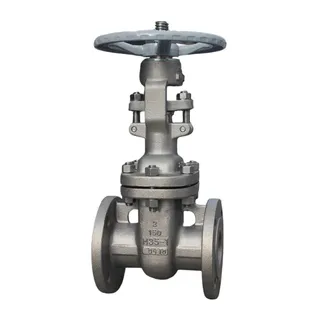In the industrial field, although valves are small components, they play a crucial role, just like the valves in the human body that precisely control the flow of fluids. As a member of the valve family, the gate valve, with its unique structure and function, is widely used in many industrial fields such as petroleum, petrochemical, power plants, long-distance pipelines, and shipbuilding. It is a key device to ensure the smooth operation of industrial production processes. However, once a gate valve leaks, it can not only damage pipelines and equipment but may even threaten the safety of personnel and the normal operation of equipment. Its importance is self-evident.
Gate valve leakage not only leads to fluid waste but may also cause serious safety accidents. Therefore, understanding the common causes of gate valve leakage is of great significance for preventing and solving leakage problems.
One of the core components of the gate valve is the wedge-shaped seal ring, which can be divided into two types: hard seal (metal wedge ring) and soft seal (composite graphite wedge ring). If the machining accuracy of the wedge-shaped seal ring is insufficient, it can easily cause internal leakage in the gate valve. Imagine a seal ring that should fit perfectly but has tiny gaps due to machining errors. When the fluid passes through, these gaps become channels for leakage. Moreover, during production operations, the working conditions of the valve are often unstable, and the pressure and ambient temperature may change greatly. This causes the seal ring to withstand large impact pressures, forces, and deformation. Over time, the gap between the seal ring and the valve body becomes larger, eventually causing internal leakage of the valve.
During valve maintenance, if the sealing surface is not cleaned thoroughly and small particles or impurities remain, these seemingly insignificant particles may scratch the sealing surface during operation. Once a penetrating scratch forms on the sealing surface, it is like tearing a hole in a solid defense line, and valve leakage becomes inevitable. In addition, when designing wedge-shaped seal rings, special attention must be paid to the strength and corrosion resistance of the seal ring. The surface hardness of the seal ring should be smaller than that of the valve cover sealing surface, so that it can undergo plastic deformation under external force, achieving a good sealing effect. However, if the medium corrodes the wedge-shaped seal ring during long-term operation, it will also cause gate valve leakage.
The opening and closing of the gate valve are controlled by the actuator, which relies on liquid, gas, electricity, or other energy sources, and converts them into driving force through motors, cylinders, or other devices to drive the valve to the fully open or fully closed position. If the actuator is not fully opened or closed, the gate valve cannot be completely opened or closed. This is like a door that is not tightly shut—when the wind blows, gaps appear, causing internal leakage of the valve.
During the production process of the cast valve body, casting defects such as pores, inclusions, cracks, or sand holes may occur. If these defects are not discovered before leaving the factory, or if discovered but not properly repaired, valve external leakage may occur during use. These defects are like "hidden injuries" on the valve body, which may cause leakage at any time under the pressure of the fluid.
After understanding the common causes of gate valve leakage, we need to master effective countermeasures. When a gate valve leaks, timely and correct handling methods can minimize losses and ensure production safety.
When internal or minor leakage occurs inside the gate valve, the primary task is to reinforce and fix the valve body gland and increase the pre-tightening force between the gland and the wedge-shaped seal ring by tightening the bolts. This is like tightening a loose screw, helping the seal ring undergo plastic deformation to reduce the gap between the valve body, gland, and seal ring, thereby preventing sealing leakage. However, if the leakage amount does not change significantly after tightening, the tightening operation should be stopped immediately, and other measures should be taken instead.
When slight internal leakage occurs in the valve, grease can be injected into the sealing surface or packing through the injection hole to temporarily relieve the leakage. This method is like applying a protective film to a wound. Although it cannot fundamentally solve the problem, it can temporarily prevent the leakage from worsening. When maintenance conditions permit, the valve should then be disassembled and returned to the factory for repair.
For valves that can be closed tightly during opening and closing, disassembly and repair of the valve stem platform can be performed. First, cooperate with process personnel to grasp and adjust the working conditions of the valve. Then, fully open the valve, remove the bolts fixed on the valve bracket, rotate the valve stem to identify the opening and lowering movement of the valve, and begin disassembling the valve body. After disassembling the valve body, perform sealing and welding work on the gap between the valve body end face and the gland. The weld gap should preferably be between 5 mm and 8 mm, and the weld angle and gland should form a 45-degree angle. Grinding should be performed based on the actual filling condition. This ensures that the repaired valve can be put back into use without leakage problems.
If the actuator parts are not accurately set and the valve does not reach the fully closed position, the valve can be manually operated, and the actuator parts can be adjusted to ensure the actuator can fully open or close the valve. This is like adjusting the braking system of a car—only when the brake can be fully engaged can driving safety be ensured.
When external leakage occurs in the valve body, the valve manufacturer can perform welding repair on the defective parts or return the valve to the factory for body replacement. First, the defects on the valve body should be inspected. If there are through cracks, penetrating defects, or welds exceeding a certain area, these conditions are not allowed to be repaired and the valve body must be replaced. For repairable defects, appropriate welding procedures should be developed, specifying welding methods, electrode materials, post-weld stress relief methods, and non-destructive testing for the welding positions to ensure compliance with repair standards.
Simply handling problems after they occur is far from enough. Preventing problems before they happen is the key to ensuring industrial production safety and efficiency. Therefore, improving the safety and reliability of gate valves and reducing leakage and other faults from the source is a task that every industrial practitioner should take seriously. The following aspects explain how to improve the safety performance and reliability of gate valves to ensure stable operation under various complex working conditions.
Selecting appropriate materials based on the nature of the medium (such as temperature, pressure, and corrosiveness) is crucial for manufacturing gate valves. For example, high-temperature and high-pressure environments require heat- and pressure-resistant materials, while corrosive media require materials with good corrosion resistance. In addition, composite materials or coating technologies can be used to enhance corrosion and wear resistance. This is like putting a "protective suit" on the valve, allowing it to maintain excellent performance even in harsh environments.
Regular inspection and maintenance of gate valves are important measures to prevent leakage. Inspection should include checking whether the valve body, valve stem, and sealing surface have wear, cracks, or deformation, and whether fasteners are loose or detached. Problems should be resolved or parts replaced promptly. In addition, the valve components should be regularly cleaned and lubricated to extend service life. This is like performing regular maintenance on a car—only by discovering and fixing problems early can normal operation be ensured.
Optimized design can improve the safety and reliability of gate valves. For example, adopting elastic sealing structures enhances sealing performance; using corrosion-resistant materials extends valve service life; and employing advanced machining and inspection technologies improves product quality and consistency. Furthermore, integrating intelligent control systems allows for remote monitoring and management, enhancing system stability and safety. This is like equipping the valve with a "smart brain" that can monitor operating conditions in real time and detect problems early.
Proper installation is one of the key factors for ensuring safe valve operation. During installation, the following points must be noted: ensure that the pipeline is clean and free from debris to avoid scratching the sealing surface; tighten the flange bolts evenly and with appropriate force to prevent leakage; and follow the manual instructions for installation and adjustment to ensure proper opening, closing, and optimal sealing performance. This is like building a bridge; only by following the correct procedures can safety and stability be guaranteed.
As a key component of industrial pipeline systems, the importance of gate valves is self-evident. Through in-depth analysis of leakage causes and the adoption of effective treatment measures and preventive strategies, the safety performance and reliability of gate valves can be greatly improved. In industrial production, we should pay full attention to the selection, installation, maintenance, and management of gate valves to ensure their stable operation under various working conditions, providing strong assurance for the smooth progress of industrial production.


